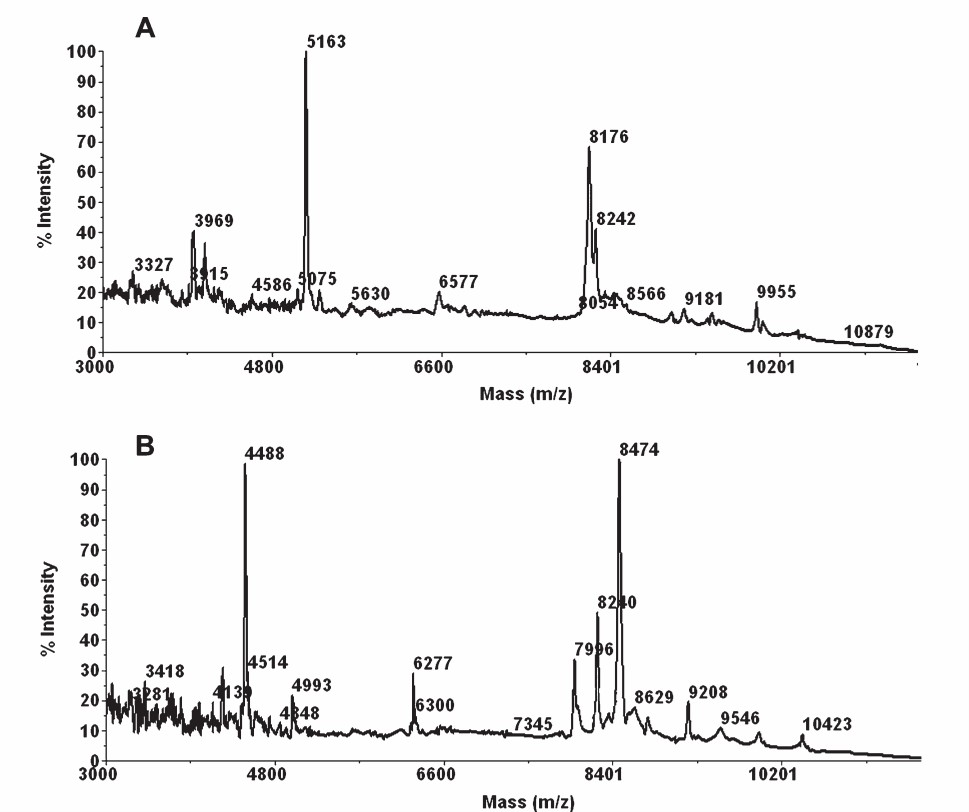Pathogenic nematode protein profiles can help researchers to understand how pathogenic nematodes interact with their hosts. Matrix-assisted laser desorption/ionization (MALDI) is an ionization technique which uses a laser energy-absorbing matrix to produce gaseous ions from large molecules in the solid state. Molecules are ionized by the loss/gain of protons in the hot plume of ablated gases and accelerated into a mass spectrometer for detection. Time of flight mass spectrometer (ToF-MS) measures the time taken by these ions to reach the detector, which is measured by the mass/charge value, with smaller and/or more charged ions moving faster.
Lifeasible is a credible provider of high-quality detection of plant nematodes by mass spectral analyses. Our platform is equipped with state-of-the-art facilities and highly experienced staff to support projects in all areas. We guarantee to deliver results on time to our customers.
 Fig.1 Protein profiles of plant nematodes with MALDI-ToF-MS. (Perera MR, et al., 2005)
Fig.1 Protein profiles of plant nematodes with MALDI-ToF-MS. (Perera MR, et al., 2005)
| Steps | Operation Methods |
| Protein Extraction and Sample Preparation |
|
| Optimization of Instrument Settings for MALDI-ToF MS |
|
Lifeasible provides fast turnaround, high-quality detection services at competitive prices for customers worldwide. Our advanced technical platforms can help our clients complete the research process with quality and quantity. If you are interested in our services or have any questions, please feel free to contact us or make an online inquiry.
Reference
Lifeasible has established a one-stop service platform for plants. In addition to obtaining customized solutions for plant genetic engineering, customers can also conduct follow-up analysis and research on plants through our analysis platform. The analytical services we provide include but are not limited to the following:
STU-CRISPR System Improves Plant Genome Editing Efficiency
April 19, 2024
Application of Exosomes in Facial Beauty
April 12, 2024